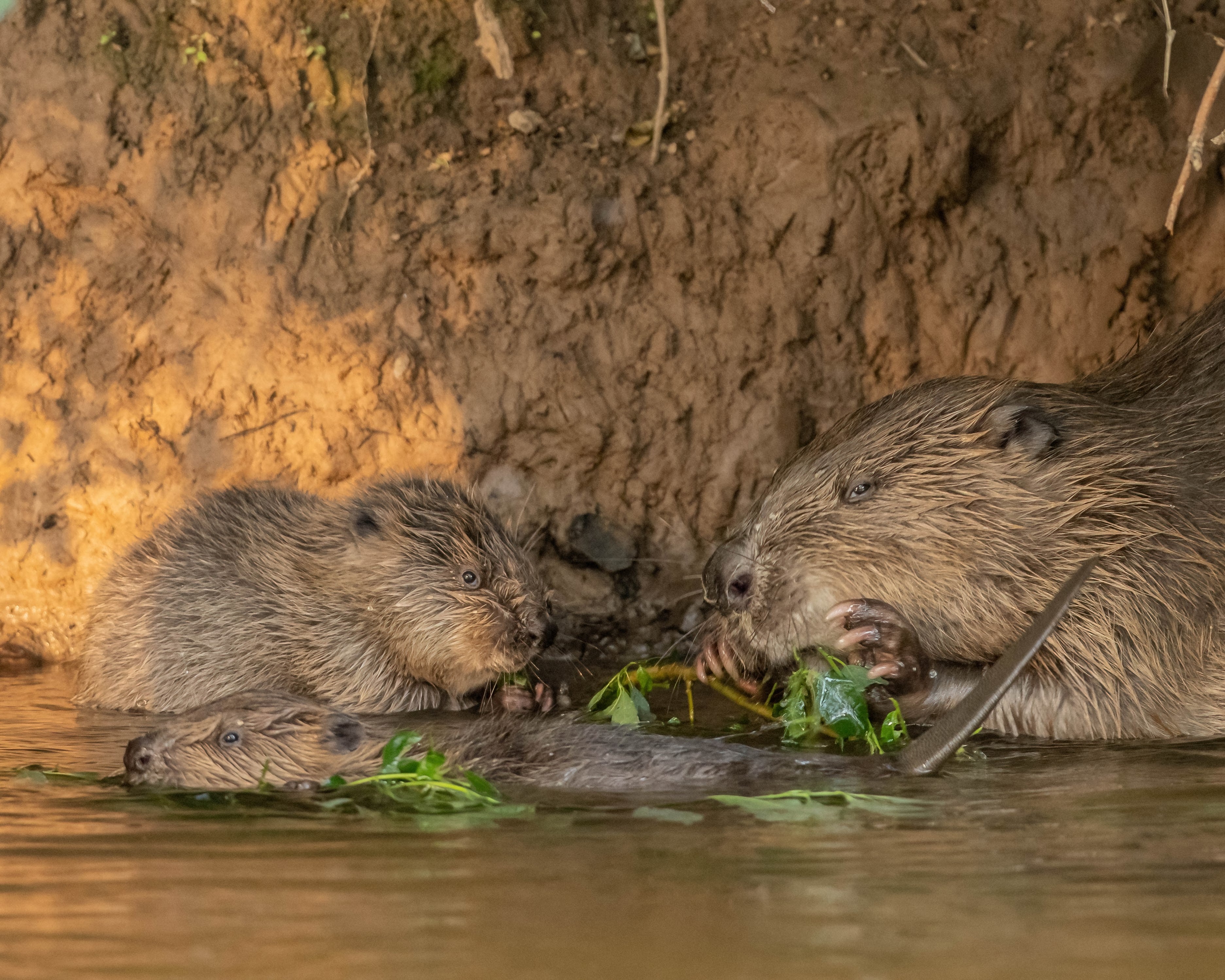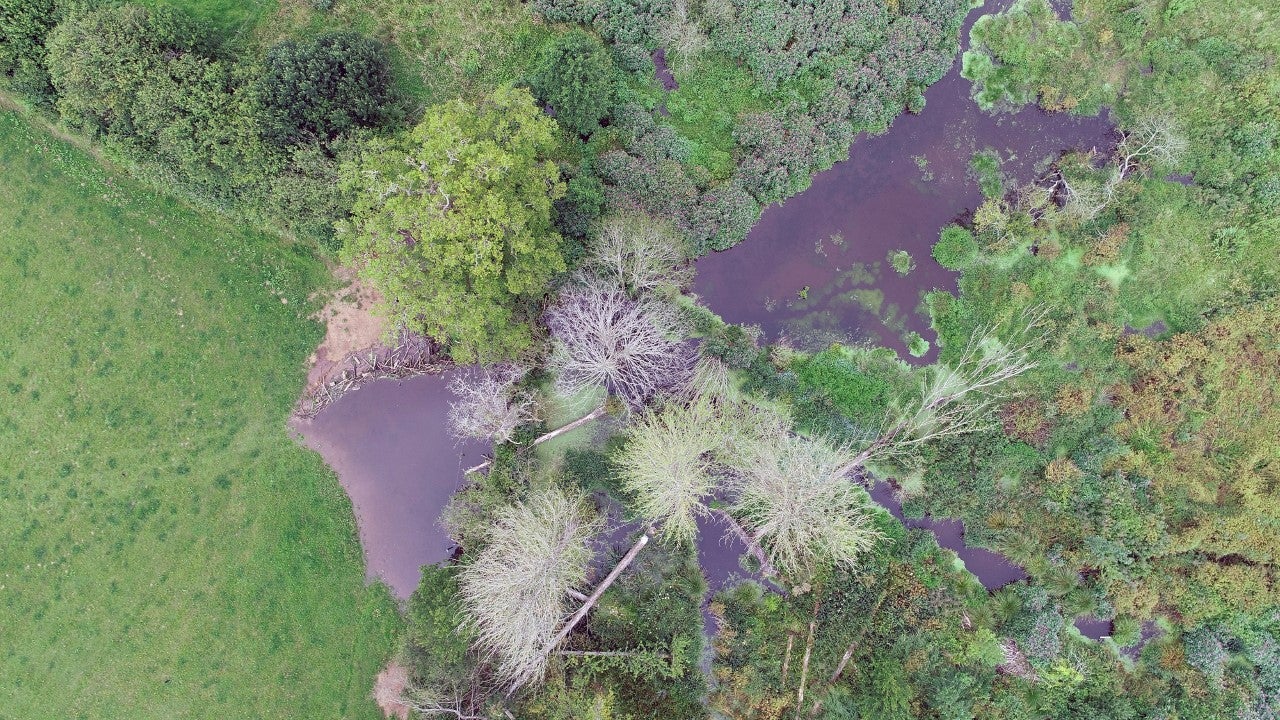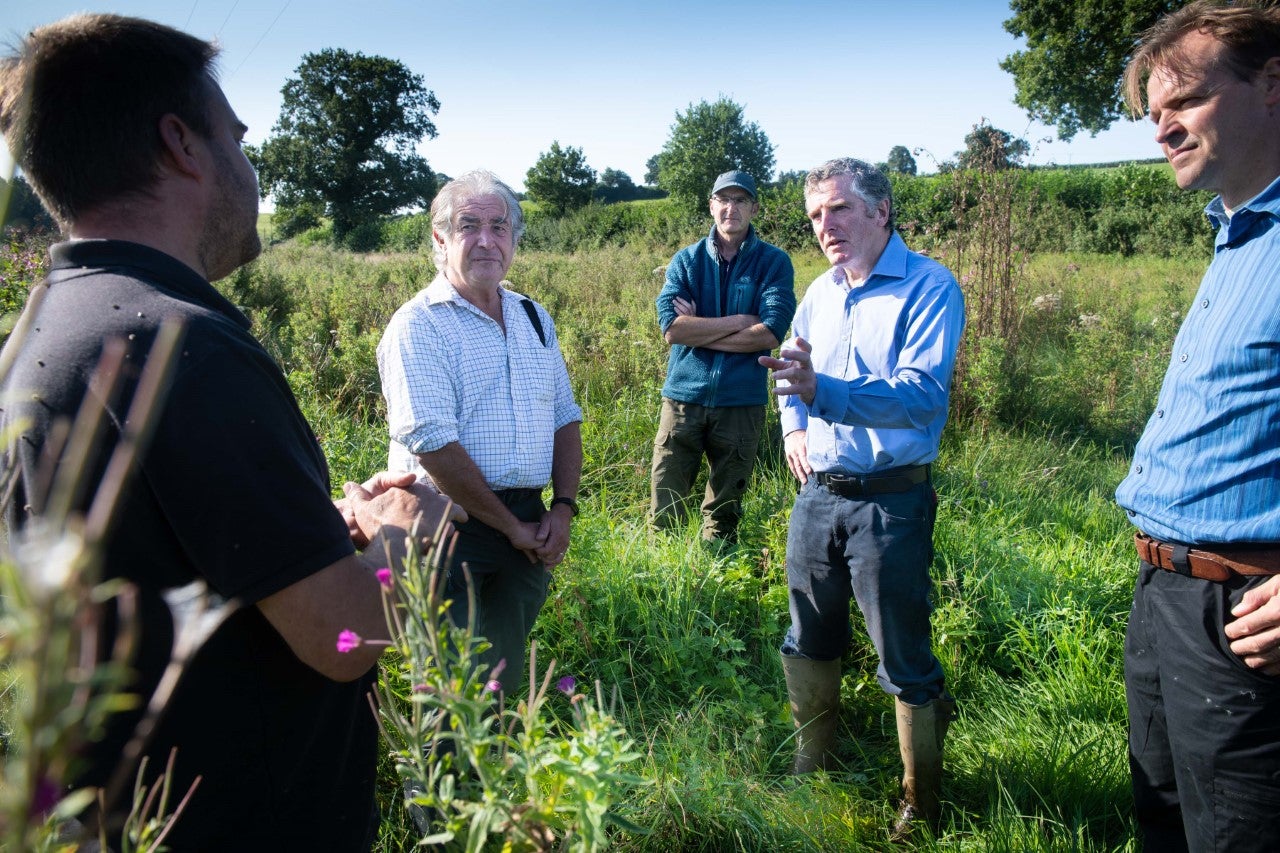Living with beavers: How the wild creature finally returned to British rivers after 400 years
After 400 years beavers could return to populate England’s rivers, land managers talk to Holly Bancroft about the government’s new consultation and the ups and downs of living alongside the animals
When a family of beavers was spotted on a river in Devon, they immediately captured the hearts of people in the surrounding towns and villages. Nestled among the quiet bends of the River Otter, the family was filmed grooming each other and playing together, confirming months of rumours about the sleek brown creatures and their fabled return to England after 400 years.
Six years on from this discovery, there are around 20 separate family groups all co-existing on the river. It is hoped that the engineering animals will soon become a common sighting in England’s waterways. The government opens a consultation this week into their reintroduction.
The government plans legal protection in England, making it an offence to deliberately capture or kill them or to damage their breeding sites and resting places.
Wildlife lovers will also be able to apply for licences to release beavers as long as they have a management plan in place.
However, concerns about the impact on farming and fish – and their controversial reintroduction in Scotland – have made some parties worried about what could happen if beavers are once again given free reign over rivers.
“Beavers in the right place can do great things but beavers in the wrong place can cause quite significant issues,” explains John Varley, director at Clinton Devon Estates.
Beavers are a “keystone” species, which means that their presence benefits areas. The semiaquatic mammals modify the environment around them, support other animals and reduce the risk of floods.

However, their tenacity for building can mean that they get in the way of farmers particularly when they block drainage ditches.
When beavers were spotted on the River Otter in his estate, “all hell broke loose”, Mr Varley said. There was a huge amount of public interest in the animal family but the government’s initial view was that they should be removed.
Sensing an emerging public relations disaster, Mr Varley and the Devon Wildlife Trust secured permission from Defra to carry out the only English trial. “We started off with a couple of beavers,” Mr Varley says. “Then we went up to five and now we have about 50.”
Speaking about the estate’s home farm, he says: “We have a pair of beavers who are flooding drainage ditches in a field.” Trained estate workers now spend most of their time in these fields removing branches, twigs and debris that the beavers have picked up to block the ditches.
“If you remove a small blockage in a drainage ditch, they’ll just come and put it back again,” Mr Varley says. “You’ve got to do it for about a week and a half and then they realise, ‘we can’t build it here, it falls down’ and they build it somewhere else.”
But this is only a small issue compared with the impact of the beavers on the estate’s forestry. About two years ago a female beaver travelled from her home on the River Otter, across an aqueduct and over two fields and started converting a damp poplar tree plantation into a wetland.
“It’s been unbelievable,” Mr Varley says. “This lady beaver arrived four kilometres outside the trial and transformed the land around the forestry yard into a wetland. In a period of five weeks she built a 5ft dam, which is about 6ft wide.
“She included in her building material four full-sized house bricks, which she moved over 30ft to get there.
“About six weeks after she turned up, Mr Beaver showed up. A classic scenario. Let the wife finish off all the work and then the husband turns up and goes, ‘well done Dear. I’ll move in with you’.”
The beaver couple have been there for three years and have had about seven kits. The transformed habitat is helping to reduce the flooding in the village of East Budleigh, which sits downstream from the new dam but it has also caused flooding on neighbouring farms.

The impact of the animals on agriculture has caused big problems in Scotland, where there are now more than 1,000 wild beavers. The topic is so controversial that farmers have had their farms targeted after speaking about the impact of the beavers’ reintroduction on their land.
Anglers are worried that if the English reintroduction of beavers is not managed well, it could have an effect on fish. “Salmon populations are in a critical condition,” says Mark Owen, of the Angling Trust. “They are so low that I don’t think we will see salmon in English rivers by the end of my lifetime. Anything that impacts the ability for salmon to get up rivers and into spawning grounds is a huge concern.”
Beavers have the potential to block rivers and stop fish migrating. Speaking about the government’s reintroduction plan, Mr Owen says: “If we do find a problem, we want to have the right tools to make sure that we can protect these key populations.”
Mark Elliott, who led the trial in Devon, explains that the past six years have been a lesson in “trying to manage the conflicts between people and beavers”. He says: “We wanted to explore how you can get beavers back into a landscape without causing too many problems and we’ve shown that that can work.”
His team has developed ways of reducing the water levels and frequently takes out beaver dams if needed. It also uses a tool called a “beaver deceiver”, which is a pipe system that can be put through the dam.
“From a wildlife point of view, the wetlands they create are invaluable. We are in the midst of an ecological emergency and they are a really good tool for creating lost habitats,” he says.
The government consultation is open till November 17 and environment secretary George Eustice has said his department would take a “cautious approach” to the beavers’ return.

Land manager John Varley says: “Humanity can live alongside beavers if the right management protocols are in place. This consultation is really important because the beaver is the first animal reintroduction that the government will be licensing.
“People are already talking about the wildcat and the lynx. If we can get this policy right then that will really give people confidence for the future.”
Join our commenting forum
Join thought-provoking conversations, follow other Independent readers and see their replies
Comments
Bookmark popover
Removed from bookmarks